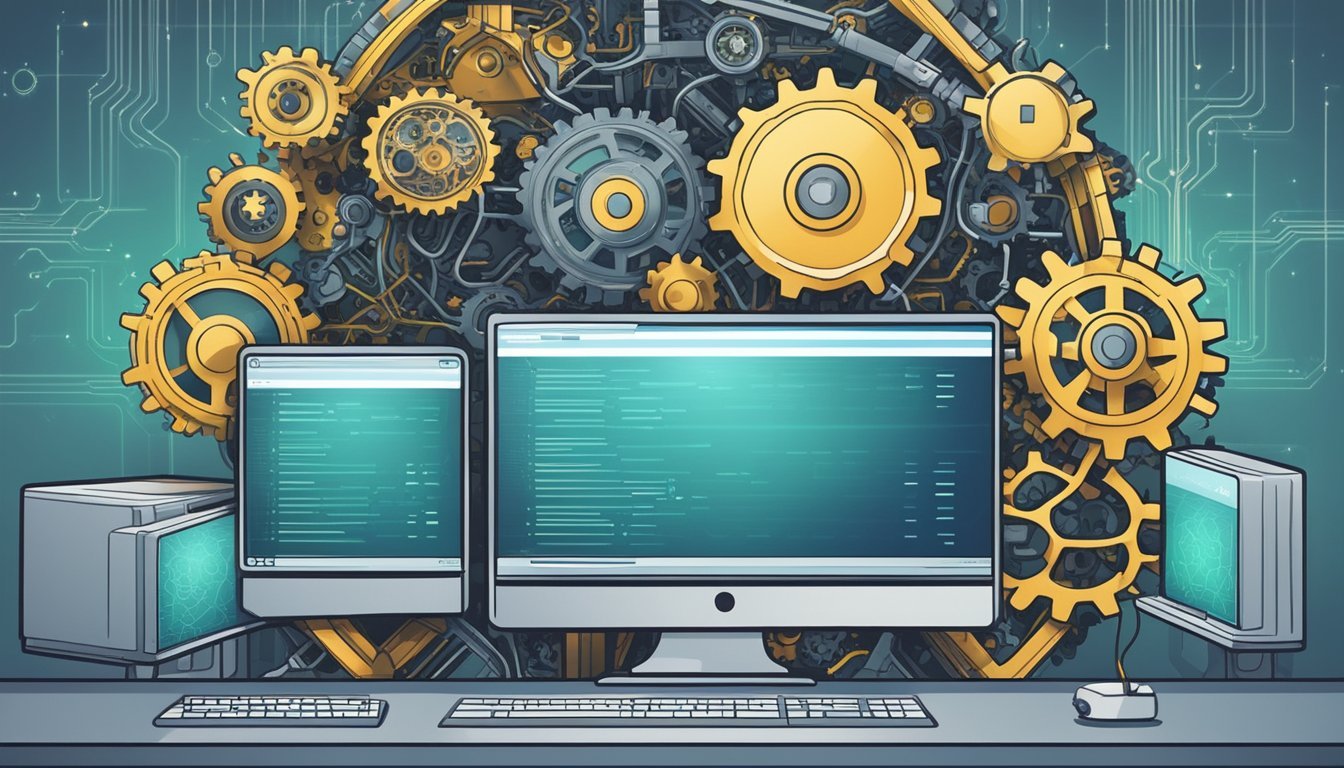Mastering AI: Machine Learning vs. Deep Learning Explained for Beginners
Machine learning and deep learning are both integral components of artificial intelligence, each with unique capabilities and applications. Machine learning is a broad field of AI that enables computers to learn from and make decisions based on data. It encompasses a variety of techniques that allow machines to improve at tasks with experience, using statistical methods to infer patterns and make predictions.
Deep learning, on the other hand, is a specialized subset of machine learning inspired by the structure and function of the human brain, known as artificial neural networks. Deep learning models consist of many layers of interconnected nodes or neurons, which can automatically extract and learn features from raw data. This advanced form of machine learning is especially adept at handling unstructured data such as images, audio, and text, making it a powerful tool for complex tasks like image recognition and natural language processing.
Historical Context of AI
The development of artificial intelligence (AI) is a remarkable journey through computer science, where innovative algorithms and increasing computational power have played crucial roles. The breakthroughs in AI have opened vast opportunities in data science and numerous other fields.
Evolution of Machine Learning
Machine learning (ML) originated from the desire to empower computers with the ability to learn without being explicitly programmed. This field of computer science gained momentum in the 1950s when the concept of AI was first articulated. It leveraged algorithms to parse data, learn from that data, and make informed decisions based on what it had learned. A pivotal moment in ML was the introduction of the perceptron, an algorithmic precursor to neural networks, which mimicked the thought processes of the human brain.
In the following decades, key developments included the invention of decision trees, the exploration of support vector machines, and the formalization of the "No Free Lunch" theorem, suggesting that no single algorithm works best for every problem.
Origins of Deep Learning
Deep Learning (DL), a subset of ML, began taking shape in the 1980s with the advent of a multi-layered neural network known as a deep neural network. The promise of deep learning was to architect algorithms that could mimic the layered structure and functionality of the human brain. However, DL's true potential only materialized with the increase in computational power and the availability of large datasets in the 21st century.
The benchmarks set by DL include beating human performance in recognizing objects and speech. Notable algorithms, such as convolutional neural networks and recurrent neural networks, have become the backbone of DL applications, contributing significantly to the fields of computer vision and natural language processing.
Fundamentals of Machine Learning
In the landscape of artificial intelligence, machine learning stands out as a pivotal domain, where computers leverage data to make informed decisions without being explicitly programmed for each task.
Defining Machine Learning
Machine learning is a subset of artificial intelligence that involves creating models that can learn from and make decisions based on data. These models are trained on a dataset to identify patterns and features, which then enable them to make predictions or decisions without human intervention.
Types of Machine Learning
Supervised Learning: Models are trained using labeled data. The model learns to predict outcomes. Examples include:
Classification: Categorizing data into predefined groups.
Regression: Predicting a continuous-valued output.
Unsupervised Learning: Models infer patterns from unlabeled data. Tasks include clustering and association.
Reinforcement Learning: Models learn through trial and error and are rewarded for desired outputs.
Key Concepts in ML
Tasks: Specific problems that machine learning models are designed to solve, such as classification and regression.
Features: Individual measurable properties that are used as input to the model to make a prediction.
Prediction: The model's output when provided with input data, often based on the probability of a given outcome.
Deep Learning Explained
Deep learning is an advanced segment of artificial intelligence that enables machines to solve complex problems by learning from data in a way that mimics human thought processes.
Defining Deep Learning
Deep learning is a subset of machine learning that uses artificial neural networks to process data. It involves neural networks with many layers—including hidden layers—that allow for the abstraction and transformation of data in complex ways. Deep learning models can recognize patterns and make decisions with little human intervention.
Neural Networks and Their Importance
Neural networks are inspired by the biological neurons in the human brain. They are composed of interconnected nodes, mirroring how neurons transmit signals. The effectiveness of deep learning owes much to the design of these artificial neural networks. Each layer in the network transforms the input data into more abstract representations, and through training, the network adjusts its weights to improve accuracy in tasks like image and speech recognition.
Differences Between ML and DL
Machine Learning (ML) and Deep Learning (DL) are distinctive paradigms of cognitive computing with diverging capabilities and complexities. To comprehensively discern their distinction, one must examine the granular intricacies of architecture, application utility, and performance drivers such as data volume and processing demands.
Comparing Architecture and Complexity
Deep Learning structures, also known as neural networks, reveal a starkly more intricate design than traditional Machine Learning frameworks. Deep Learning networks utilize multiple layers, where each constitutes a hierarchy of neurons that progressively extract and refine data features. This complexity eliminates the need for manual feature engineering, as the model self-derives features from raw input. In contrast, traditional Machine Learning algorithms significantly depend on human intervention to pre-process data and handcraft appropriate features.
Functional Distinctions in Applications
Functionality and application efficacy diverge between ML and DL. Machine Learning excels in applications where the relationship between data points is linear or well understood, thus requiring less computational power. Conversely, Deep Learning is the go-to for more abstract problems—like image and speech recognition—wherein the network discerns intricate patterns that Machine Learning algorithms cannot easily capture.
Requirement of Data and Computing Power
Finally, the sheer volume of training data and the computing power, often in the form of GPUs, differentiate these two AI technologies. Machine Learning algorithms can train on smaller datasets and often do not need the extensive computational might that their Deep Learning counterparts demand. Deep Learning thrives on big data, requiring prodigious datasets to learn effectively, but once trained, they often outperform ML in accuracy and predictive power.
Common Algorithms and Models
Machine learning and deep learning encompass a variety of algorithms and models, each with its own strengths and applicable use cases. Selecting the appropriate technique is crucial for achieving optimal results in AI-driven tasks.
Popular ML Algorithms
Machine learning algorithms are varied, but some have gained prominence due to their effectiveness and adaptability across different scenarios.
Decision Trees: A flowchart-like model used for classification and regression, helping in decision-making by breaking down data into smaller subsets.
Logistic Regression: Employed for binary classification problems, it predicts the probability of a categorical dependent variable.
Linear Regression: A fundamental algorithm in statistics used to predict a dependent variable based on the value of an independent variable.
Support Vector Machine (SVM): Ideal for classification tasks, SVM finds the optimal hyperplane that best separates classes of data.
Random Forest: An ensemble learning method that works by constructing a multitude of decision trees for improved predictive accuracy.
These ML algorithms serve as the bedrock for numerous applications in fields ranging from finance to healthcare.
Noteworthy DL Models
In contrast, deep learning leverages more complex structures, namely neural networks, for handling data with higher abstraction levels.
Neural Network: Composed of interconnected units or neurons, these models are designed to simulate how the human brain operates, hence being exceptionally powerful in pattern recognition.
Convolutional Neural Network (CNN): A class of neural network especially effective for image recognition and processing due to their ability to capture spatial hierarchies.
Recurrent Neural Network (RNN): Suited for time series analysis or any context where there's a sequence of data, as they have the ability to retain information from previous inputs.
These models have revolutionized fields such as computer vision and natural language processing, setting the foundation for advanced AI systems.
Real-world Applications
In the ever-evolving landscape of artificial intelligence, machine learning and deep learning propel a diverse array of applications, from e-commerce recommendations to autonomous vehicles. Both approaches boast improvements in predictive accuracy and speed, shaping the future of technology and convenience.
Machine Learning Applications
Machine Learning finds its strength in applications where patterns and predictions are key. A prime example includes e-commerce giants like Amazon, utilizing machine learning to enhance customer experiences through personalized recommendations. These models analyze past purchase data and browsing histories to predict future buying behaviors, thereby increasing sales and customer satisfaction.
In the domain of finance, machine learning algorithms are adept at predicting stock market trends, enabling traders to make informed decisions. The precision of these predictions is constantly refined as the system learns from historical data, making the financial markets more approachable for algorithmic trading.
Deep Learning in Use
Deep Learning takes artificial intelligence to new heights with its sophisticated neural networks, especially in fields requiring high levels of accuracy. Self-driving cars rely heavily on deep learning for their core functionalities, such as speech recognition for voice commands, facial recognition for driver monitoring, and image processing for real-time traffic analysis, ensuring safety on the roads.
Another profound application of deep learning is in Natural Language Processing (NLP). By interpreting and understanding human language, these systems power virtual assistants and conversational bots, facilitating more natural and efficient interactions between machines and humans. The presence of deep learning in speech recognition software has significantly improved its capability to comprehend diverse accents and dialects, carrying us closer to seamless human-machine communication.
Implementation Challenges
When deploying machine learning and deep learning models, practitioners face significant challenges, particularly regarding data quality and maintaining the integrity of the models' output. These hurdles can affect the performance and applicability of AI systems in real-world scenarios.
Data Quality and Availability
Data quality is essential for training robust machine learning and deep learning models. High-quality data should be accurate, complete, and relevant to the task at hand. Labeled data, which is data that has been annotated with informative tags, is especially crucial for supervised learning algorithms. However, data availability can be a critical bottleneck. Without sufficient data, models may struggle to learn effectively, leading to problems like overfitting, where a model performs well on its training data but poorly on new, unseen data.
In deep learning, the need for extensive datasets is even more pronounced due to the complexity of the models. When data is scarce, acquiring or producing more can be expensive or time-consuming.
Maintaining Accuracy and Avoiding Bias
Ensuring models maintain accuracy and do not perpetuate or introduce bias is another challenge. Bias in models can arise from biases present in the training data itself. If the data reflects existing prejudices, the model may learn these as patterns and make unfair or unethical decisions.
Techniques like cross-validation and regular reviews of the model's decision criteria can help identify and mitigate overfitting and bias. It is also critical to have diverse datasets that are representative of all involved variables to reduce the risk of biased outcomes. Practitioners must be vigilant to prevent models from making decisions that unfairly discriminate against any group.
By focusing on these aspects, the deployment of machine learning and deep learning models can be more successful, leading to more reliable and equitable outcomes in real-world applications.
Future of Machine and Deep Learning
As we look towards the future, significant developments in machine and deep learning are on the horizon, driven by advancements in algorithms and computing power, and these will profoundly impact human experience.
Advances in Algorithms and Computing
The progress of machine learning and deep learning heavily relies on algorithms and computing power. Specifically, advancements in GPUs (Graphics Processing Units) have dramatically accelerated deep learning processes, enabling models to perform complex computations at unprecedented speeds. In the coming years, GPUs are expected to become even faster and more energy-efficient, bolstering deep learning capabilities further.
Another key development is the evolution of transfer learning, a method where a model developed for one task is repurposed as the starting point for another task. This approach reduces the need for extensive data and computing resources, making deep learning more accessible and efficient.
Impact on Human Experience
The impact on human experience due to machine and deep learning innovations cannot be overstated. As these technologies continue to mature, they will empower systems capable of self-learning, leading to more personalized and autonomous applications. For instance, deep learning models that interpret sensory data can enhance virtual assistants' abilities to provide personalized experiences to users.
The future may also see an increase in the prevalence of experience-driven AI, where systems learn and adapt from each individual interaction, providing more accurate and tailored responses over time. This shift promises to transform how we interact with technology, making it more intuitive and integrated into our daily lives.
Conclusion
Machine Learning (ML) and Deep Learning (DL) form the cornerstone of modern AI-driven technologies, each with its distinct advantages and optimal use cases. Machine Learning offers versatility and efficiency in decision-making processes for applications with smaller datasets; its algorithms can yield quick and satisfactory outcomes while requiring comparatively minimal computational power.
Deep Learning, a subset of ML, excels in handling complex tasks such as image and speech recognition due to its interpretation capabilities that mirror the human brain. Deep Learning algorithms require extensive data to train effectively, yet their advances have led to unparalleled accuracy in fields requiring nuanced recognition—thereby, often enhancing customer satisfaction in AI-interactive systems.
While ML can still be the preferred choice for tasks that do not necessitate the depth that DL provides, the selection between ML and DL must align with specific project requirements. As the landscape of AI evolves, combining multiple approaches might sometimes offer the most robust solution.
Choosing the right approach hinges on the domain's demands, available resources, and desired outcomes. Stakeholders must weigh these factors meticulously to harness the full potential of AI technologies.




